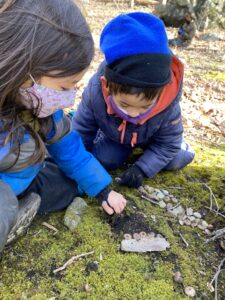 A recent early childhood education study generated some surprising results. The study followed a group of low-income children who applied to free, public prekindergarten programs via a lottery, and compared the outcomes for those who did and didn’t get in. The kids who attended the programs showed better performance in kindergarten, but over time they had lower test scores and a host of behavior issues. The researchers believe that the kids in the academic-focused programs had too much structure imposed on them at too young an age, while the kids who didn’t participate thrived due in part to more opportunity for free play.
A recent early childhood education study generated some surprising results. The study followed a group of low-income children who applied to free, public prekindergarten programs via a lottery, and compared the outcomes for those who did and didn’t get in. The kids who attended the programs showed better performance in kindergarten, but over time they had lower test scores and a host of behavior issues. The researchers believe that the kids in the academic-focused programs had too much structure imposed on them at too young an age, while the kids who didn’t participate thrived due in part to more opportunity for free play.
As someone who works in early childhood education, I didn’t find these results surprising. Our programs allow kids plenty of time to play outdoors in nature, and we see the benefits of this kind of play every day. Here are some ways you can bring these kinds of enriching experiences into your child’s life.
Free Play Starts At Home
What your child does at home makes just as big a difference as what they do in school. You should interact with them, let them ask questions and be creative. You can even instruct the nanny to do so as well so he won’t be just looked after for a few hours while you’re away, but rather have a whole different person to learn from and develop.
When choosing toys, try to find ones that are open-ended. A play set themed from a popular cartoon series can only be played with one way. But open-ended toys allow for the kind of imaginative play that develops kids’ creativity and problem-solving skills. For kids in our pre-k programs, wooden blocks can become cities, train tracks or a house for a stuffed turtle. A simple aluminum pot can become a pretend cake or a helmet for an epic battle between knights and dragons. Open-ended toys are the kindling that spark the fire of childhood imagination.
Create a Backyard Where Creativity Blossoms
 A fixed playground structure can only ever be what it is, and kids quickly tire of going down the slide the same way over and over. Instead (or in addition), set out what we call loose parts: tires, planks, wooden crates, tree branches, and stones. We’ve seen our kids use these things to create a path over an imaginary lava field, or a pirate ship, or an impromptu see-saw. The possibilities are endless.
A fixed playground structure can only ever be what it is, and kids quickly tire of going down the slide the same way over and over. Instead (or in addition), set out what we call loose parts: tires, planks, wooden crates, tree branches, and stones. We’ve seen our kids use these things to create a path over an imaginary lava field, or a pirate ship, or an impromptu see-saw. The possibilities are endless.
Nature Play Out in the World
While screen time has been nearly unavoidable the past few years, our area’s parks can be just as engaging and a lot better for kids’ development. Rockwood Hall in Pleasantville has a glorious old weeping beech with low branches that invite kids to explore. Hastings-on-Hudson‘s Sugar Pond is brimming with tadpoles and sunfish to catch and release. And Peabody Preserve Outdoor Classroom in Sleepy Hollow is a 39-acre nature preserve owned by the Public Schools of the Tarrytowns, used for hands-on learning in the outdoors. It’s free and open to the public, with gentle trails that work well for little legs. The Rewilding School runs a parent and child group there, and the kids love looking under logs for salamanders, catching frogs in the stream, and building shelters from fallen branches.
Wherever you go, try to let the kids lead the way. If you can slow your pace and be present, nature can become one of your child’s best teachers.
Katie Hickes is an outdoor educator at The Rewilding School, which offers outdoor education programs for children and adults in Westchester County. Learn more about nature-based learning at www.rewildingschool.com, or email Katie at info@rewildingschool.com






